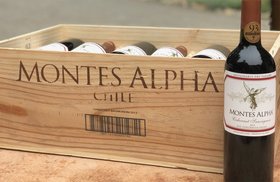Chilean Wine: 10 Best Bottles To Buy In 2025, Regions, Styles
Although considered a “new world” wine region, Chile has actually been producing wines since the 1500s.
In the past few decades, the country underwent a viticultural revolution — thanks to French grapes and techniques — bringing Chilean wine back into the limelight.
Today, Chile has an irresistible collection of refreshing whites, bold reds, and festive sparkling wine bottles — both single-vineyard and small-plot styles. They’re also held as affordable alternatives to Bordeaux wine.
Let’s explore Chile’s popular wine styles and discover 10 stunning Chilean wines along with some delicious food pairings. We’ll then take a tour of Chile’s top wine regions and explore their terroir, viticulture, and winemaking.
Lastly, we’ll uncover the captivating history of Chilean wine.
Further reading
- Discover The World's 23 Favorite Wine Grape Varieties and Their Best Bottles.
- Explore all you need to know about French Wine - Grape Varieties, Regions and Best Wines.
7 Most Popular Chilean Wine Styles
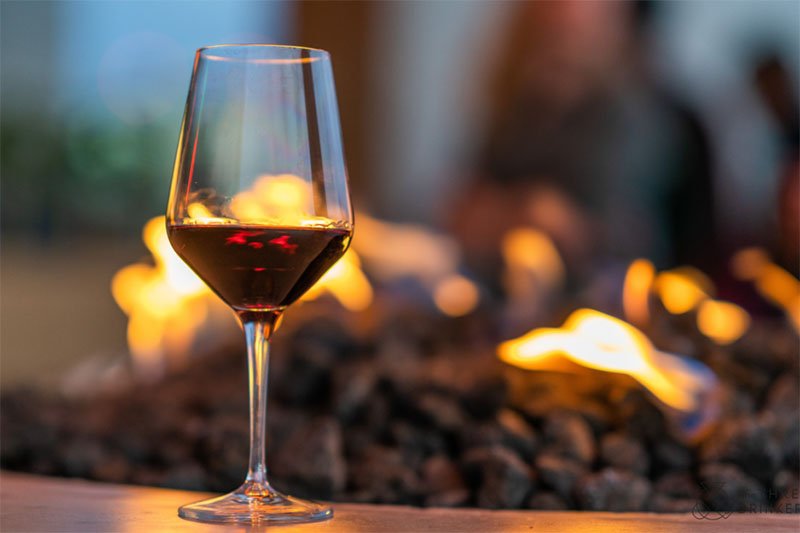
Chile is home to various wine styles, but some of these enjoy universal appeal:
- Cabernet Sauvignon: Wines made from this grape variety exude mint and bell pepper aromas, with juicy flavors of dark plum and red cherries.
- Sauvignon Blanc: Chilean Sauvignon Blanc tastes similar to exotic white Bordeaux with peach and lemon scents complemented by a zesty and minerally palate.
- Chardonnay: Tropical fruit aromas greet the nose, while minerally notes of meringue, baked peach, and pineapple meet the palate.
- Carmenere: Black pepper and cocoa powder notes dominate the nose when opened, while dark plum and dark fruit flavors flood the palate when drunk.
- Pinot Noir: Chilean Pinot Noir wines flaunt an irresistible nose of allspice and flowers, elevated by a smooth, round, and creamy palate.
- Syrah: The Syrah wines of Chile offer red fruit and meaty spiced notes on the nose, accompanied by an elegant palate and silky tannins.
- Bordeaux-style Blends: Malbec, Cabernet Sauvignon, Merlot, Petit Verdot, and Carmenere grapes are blended to create Chile’s Bordeaux-style blends.These remarkable wines have a rich flavor profile showcasing flavors of raspberry and dark berries intertwined with notes of pepper and olive.
Additionally, a few Chilean wine styles, like Pais and Carignan, are slowly gaining traction.
Wondering which Chilean wine you should buy?
10 Stunning Chilean Wines To Try In 2024
Here are 10 exotic Chilean wines that deserve a place in your wine collection:
- 2007 Montes ‘Taita’ Marchique Vineyard Red
- 2015 Vinedo Chadwick
- 2005 Concha y Toro Carmin de Peumo Carmenere
- 2014 Miguel Torres ‘Escaleras de Empedrado’ Pinot Noir
- 2007 Concha y Toro ‘Gravas del Maipo’ Syrah
- 2011 Aristos ‘Duquesa d’A’ Grand Chardonnay
- 2013 Vina Maquis Franco
- 2012 Vinedos de Alcohuaz ‘RHU de Alcohuaz’ Mezcla Tinta
- 2016 Laberinto Sauvignon Blanc
- 2011 Valdivieso Merlot
1. 2007 Montes ‘Taita’ Marchique Vineyard Red, Colchagua Valley, Chile ($399)
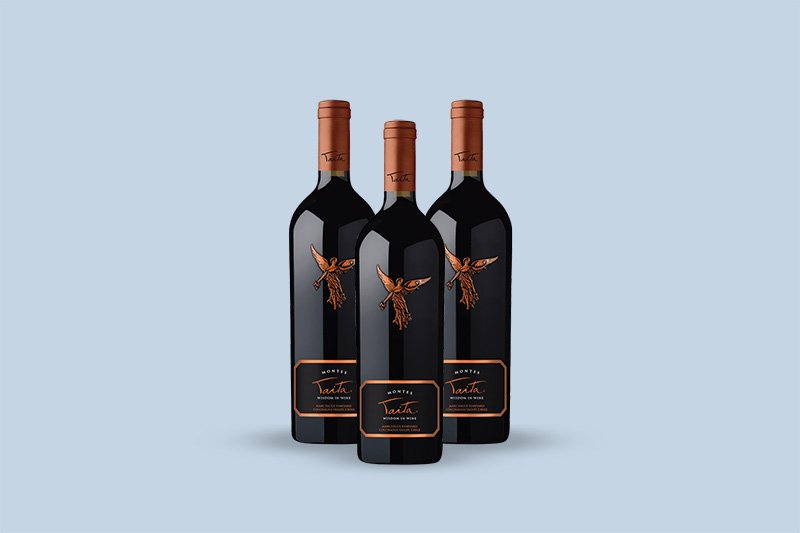
This Chilean red wine opens with chocolate and licorice aromas. It has a full-bodied and juicy palate with hints of black currant.
2. 2015 Vinedo Chadwick, Maipo Valley, Chile ($363)
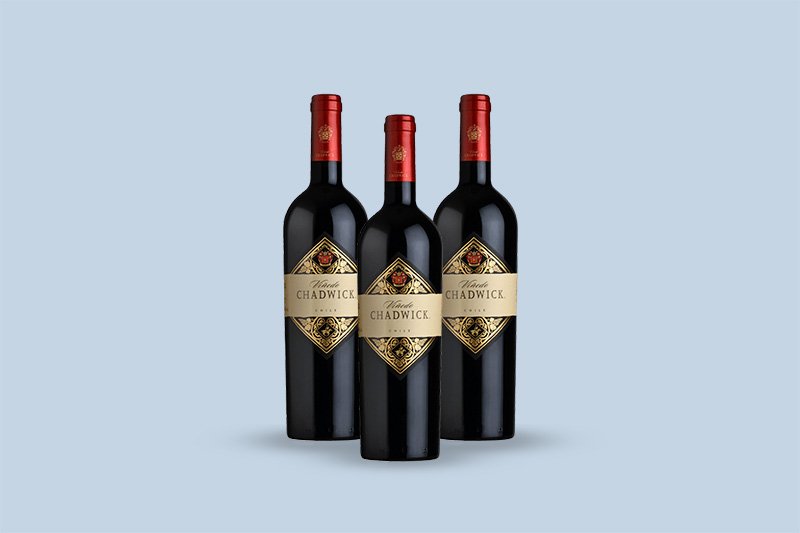
The crisp texture and fruity palate of this red wine are complemented by a lovely nose layered with black currant and mint fragrances.
3. 2005 Concha y Toro Carmin de Peumo Carmenere, Cachapoal Valley, Chile ($135)
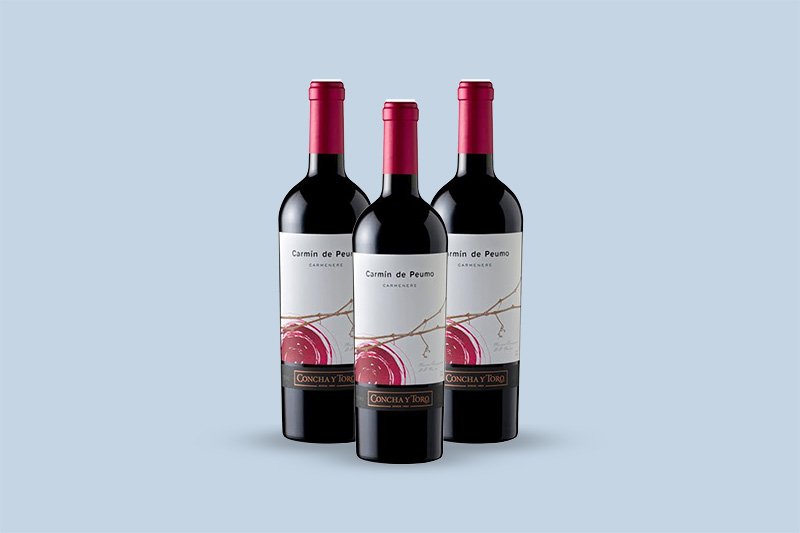
This red wine’s raspberry, fig, and oak fragrances give way to a creamy palate with sweet fruit, fudge, and woodsmoke notes.
4. 2014 Miguel Torres ‘Escaleras de Empedrado’ Pinot Noir, Maule Valley, Chile ($114)

This 2014 Pinot Noir vintage has a medium-bodied and concentrated palate with hints of flint. On the nose, this great wine reveals red fruit, exotic spice, and blood orange skin notes.
5. 2007 Concha y Toro ‘Gravas del Maipo’ Syrah, Buin, Chile ($110)
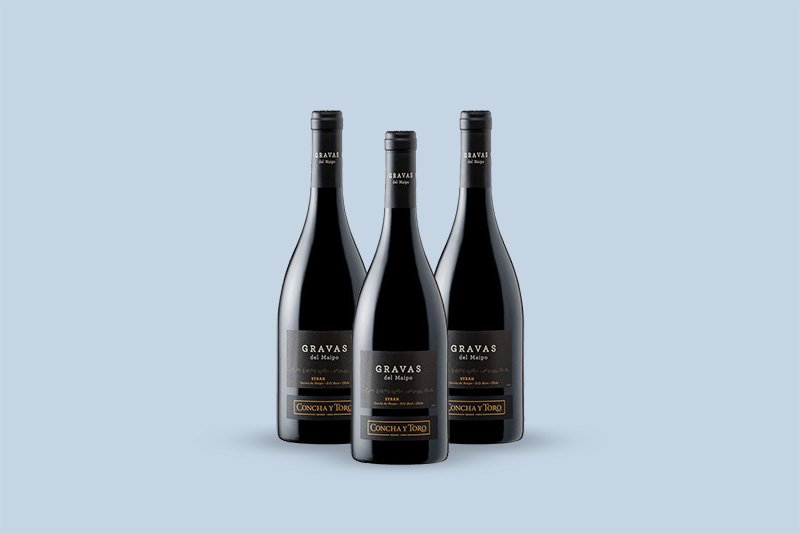
This fine wine from the famous Concha y Toro winery greets the nose with cassis, dark fruit, and mint scents. Its juicy palate boasts a black fruit core with nutmeg and licorice flavors.
6. 2011 Aristos ‘Duquesa d’A’ Grand Chardonnay, Cachapoal Valley, Chile ($78)

This white wine has a full-bodied palate with incredible depth and bright acidity complimented by tropical fruit and stone flavors. It has a subtle nose unveiling nutty and earthy aromas.
7. 2013 Vina Maquis Franco, Colchagua Valley, Chile ($60)

While the nose of this great wine flaunts floral aromas with smoky notes, its palate displays chocolate and ripe black fruit flavors accompanied by a dry tannin profile.
8. 2012 Vinedos de Alcohuaz ‘RHU de Alcohuaz’ Mezcla Tinta, Elqui Valley, Chile ($60)
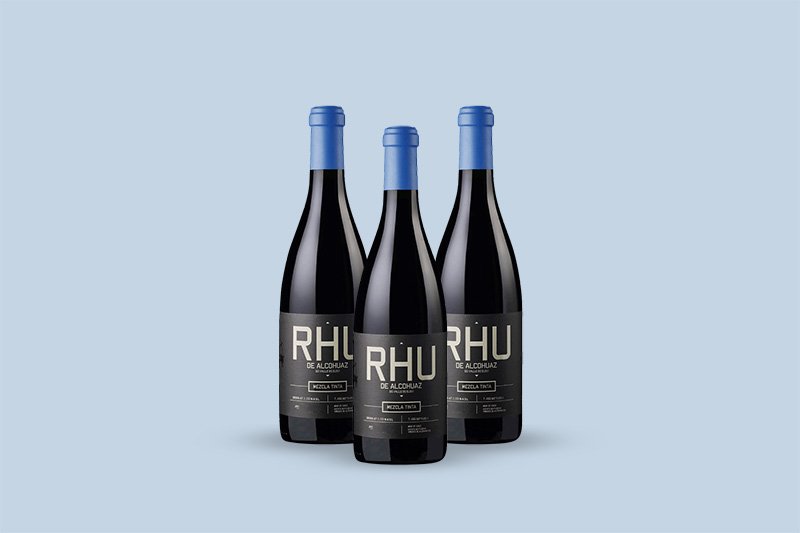
The spice and cedar fragrances of this Chilean red wine lead up to a lovely palate with fleshy structure and well-developed savory characteristics.
9. 2016 Laberinto Sauvignon Blanc, Maule Valley, Chile ($21)
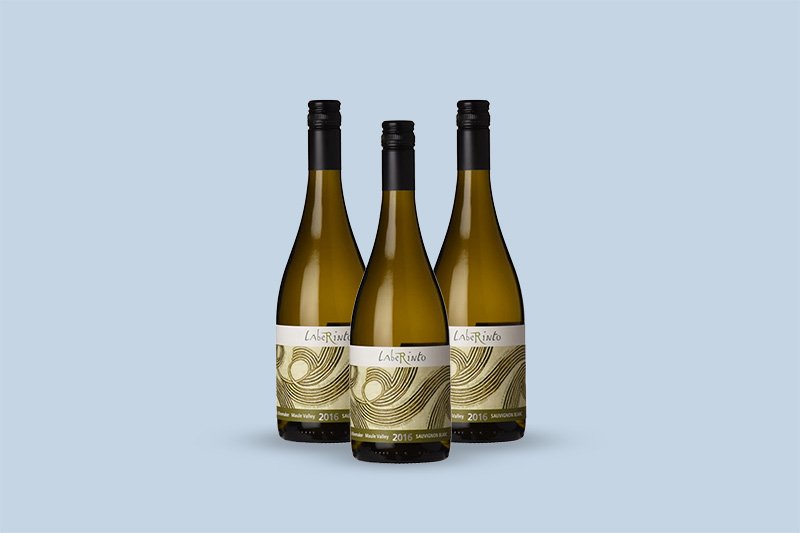
This wine’s palate offers excellent freshness and a sharp texture, culminating in a salty finish. Its nose is very aromatic, featuring flinty and mineral scents.
10. 2011 Valdivieso Merlot, Central Valley, Chile ($15)

This fine wine has an intense nose dominated by sweet spice, coffee, chocolate, and plum fragrances. It has a smooth and soft palate showcasing silky tannins and excellent structure.
Best Food Pairings With Chilean Wine

With numerous Chilean wine styles, you’ll easily find a Chilean wine that goes perfectly with almost any dish you pick.
You can pair Chilean reds with meat dishes, stews, and local delicacies like empanadas.
Chilean white wines pair excellently with ceviche, shellfish, rich cheeses, and local foods like sopapillas.
Should You Invest In Chilean Wine?

Over the last two decades, Chile has built a reputation as a source of premium wines.
In 2004, two exquisite Chilean wines ranked #1 (2000 Viñedo Chadwick) and #2 (2001 Seña) at the ‘judgment of Berlin’, beating their Bordeaux and Super Tuscan counterparts.
Since then, wine critics have been paying close attention to the enviable collection of Merlot, Cabernet Sauvignon, Carmenere, and Syrah wines of Chile.
The recent vintages of Clos Apalta, Almaviva, and Seña are priced affordably and hold significant appreciation potential, in our view.
In other words, Chile should be on your radar as it is an upcoming investment wine destination.
If you’re looking for a hassle-free way to invest in Chilean wines, visit Vinovest — an online wine investment company that helps you buy, store, and sell investment-grade wines from all over the world.
Next, we’ll take a look at Chile’s top wine regions:
The 5 Key Chilean Wine Regions
Here are Chile’s five key wine-producing regions:
1. Atacama

The Atacama region of Northern Chile divides into two valleys: Copiapo and Huasco.
While the Copiapo Valley is known for its table grapes, Vino Copiapino wine, and Pisco liquor, the Huasco Valley is famous for Pajarete, a wine made from the native Pajarete grape variety.
2. Coquimbo
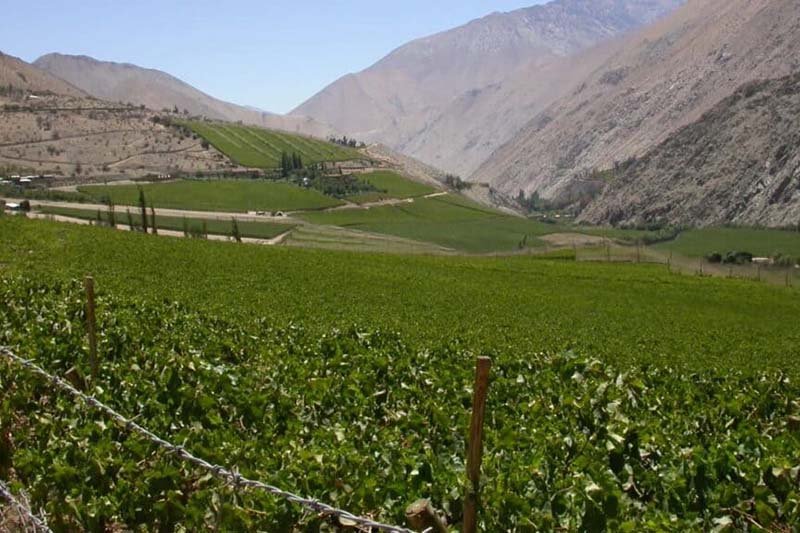
The Coquimbo region, located 330 miles north of Santiago (Chile’s capital), has three valleys: Limari, Elqui, and Choapa.
Although the Limari Valley is best known for Chardonnay and Sauvignon, it’s also planted with Pinot Noir and Syrah. The wine region produces refreshing wines with a unique mineral edge.
Elqui, the most commercially viable wine region of Northern Chile, produces excellent table wines.
The Choapa Valley houses some great Chilean wineries which produce high-quality Cabernet Sauvignon and Syrah wines with low pH and good acidity.
3. Aconcagua

Located 40 miles north of Santiago, the Aconcagua region has two wine sub-regions: Aconcagua and Casablanca.
Whereas the Aconcagua Valley is famous for its Chilean reds, the Casablanca region is known for its Chardonnay and Sauvignon Blanc white wines.
4. Central Valley
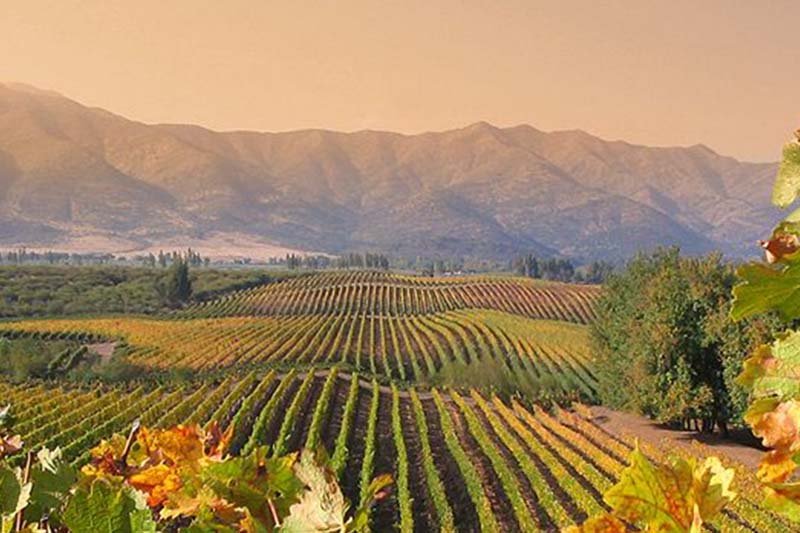
Wedged between the Chilean Coastal Range and the Andes mountains, Chile’s Central Valley region includes four sub-regions: Maipo, Rapel, Curico, and Maule.
Maipo Valley is renowned for its bold Cabernet Sauvignon and flinty Sauvignon Blanc wines.
The Rapel region, which includes the Cachapoal and Colchagua valleys, produces exceptional Cabernet Sauvignon, Malbec, Syrah, and Carmenere wines.
The Curico Valley is planted with several grape varieties, but the Sauvignon Blanc and Cabernet Sauvignon grapes are the most prominent.
Grape varieties like Malbec, Cabernet Franc, and Merlot are common in the Maule Valley.
5. Southern Chile
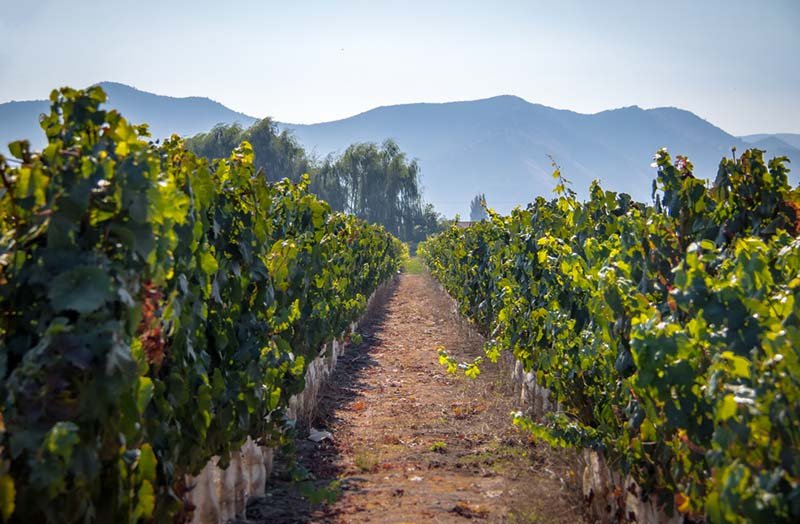
Southern Chile has three wine regions: Itata, Bío Bío, and Malleco.
Muscat, Pais, and Carignan are the typical grape varieties planted in the Itata Valley.
The Bío-Bío Valley is known for its Chardonnay, Pinot Noir, Moscatel de Alejandria, Sauvignon Blanc, and Pais plantings.
Southern Chile’s Malleco Valley is renowned for its refreshing Chardonnay and Pinot Noir wines.
Curious about what makes Chilean wines so unique?
Chilean Wine: Terroir, Viticulture, And Winemaking

Chilean vineyards enjoy a Mediterranean climate with dry summers and rainy winters.
Cool air from the Pacific Coast and the Andes mountains moderate the temperatures in Chiles vineyards, ensuring optimal conditions to develop complex flavors. The daily temperature shifts also significantly influence the balance of Chilean wines.
The Chilean wine region is a mosaic of diverse soil types featuring basalt, limestone, volcanic tuff, and clay.
Chilean winemakers use drip irrigation to irrigate their plots, which offers more control.
Foreign investment has drastically transformed Chile’s winemaking practices. The Chilean winemaker community now embraces new technologies and styles that help them produce internationally recognized wines.
Traditionally, Chilean wines were aged in rauli beechwood. But seeing that the international wine community isn’t fond of this, Chilean wine producers started using oak barrels and stainless steel tanks for aging.
Want to explore Chile’s wine history?
The Fascinating History Of Chilean Wine

Chile’s first vines were planted in the 1500s, but it was only in the 1800s that Chilean wine production actually took off.
When the phylloxera pest destroyed vineyards across the world in the 1800s, Chilean vineyards survived thanks to the geographical elements that isolated Chile — the Pacific Ocean, the Andes Mountains, and the Atacama Desert.
The surviving Chilean vineyards are home to some of the world’s oldest vines, producing concentrated and nuanced grapes that make excellent wines.
But until the 1990s, mainly Chileans enjoyed these extraordinary wines. Later, as Chilean wine exports began, people across the world discovered high-quality Chilean wines that were almost on par with the Bordeaux variety.
Add A Bottle Of Chilean Wine To Your Collection Today!

The Chilean wine industry produces some of the most unique and remarkable wines you’ll ever come across — they’re complex, flavor-packed, and powerfully aromatic.
Since Chile has started gaining global prominence, Chilean wine has become an attractive investment choice.
Check out the Vinovest website to discover how you can easily invest in exotic vintages from Chile. Vinovest is an online wine investment company that helps you source, authenticate, buy, store, and sell excellent wines from around the world.


